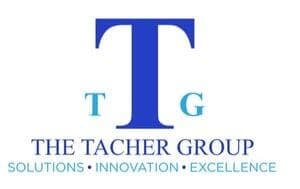Energy Efficiency can become tax savings
Are you a building owner, designer, or contractor who has integrated energy-efficient components into your commercial property?
If so, you may qualify for significant tax deductions under the 179D Energy Policy Act. The Tacher Group is ready to assist you in maximizing these savings.
Start by consulting with one of our Specialty Tax Experts. Find out the potential savings awaiting you with a complimentary 179D analysis today!
Background
The Energy Policy Act of 2005 (EPAct) introduced the Energy-Efficient Commercial Building Tax Deduction, commonly referred to as the 179D deduction. This tax incentive aims to promote the construction of energy-efficient commercial buildings. Additionally, updates in the Inflation Reduction Act offer incentives for taxpayers who adhere to fair wage practices and hire apprentices in commercial construction projects.
The Inflation Reduction Act (IRA), enacted on August 16, 2022, has extended and updated the 179D provision significantly. A key enhancement includes the introduction of a "bonus rate" for projects that adhere to labor standards. Moreover, adjustments to energy-savings criteria now align more realistically with updated ASHRAE standards. The IRA has also revised retrofit regulations to better accommodate the specific needs of renovation projects.
What Are the Requirements?
The primary objective of the 179D EPAct tax deduction is to encourage energy-efficient construction, making energy efficiency a fundamental requirement for commercial buildings. With the introduction of prevailing wage and apprenticeship provisions in the IRA, 179D also incentivizes adherence to favorable labor practices.
Pre-2023:
For tax years before 2023, qualifying buildings must comply with either (1) ASHRAE 90.1-2007 or (2) the standard adopted two years prior to construction commencement. The 179D deduction can be claimed only once per eligible building.
2023 and Beyond:
Starting from the 2023 tax year, qualifying buildings must comply with either (1) ASHRAE 90.1-2007 or the standard adopted four years prior to construction completion. The IRA has also introduced prevailing wage and apprenticeship provisions. Contractors meeting these optional criteria may qualify for a 5x multiplier on their 179D deduction amounts.
Due to updated retrofit requirements under the IRA, it is now possible to claim 179D deductions more than once for a single building. However, the building must be at least three years old and satisfy all retrofit criteria to qualify.
